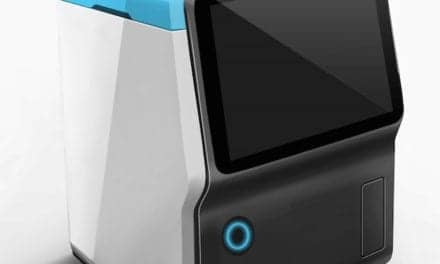Summary: A research team unveiled a hypersensitive, flexible strain sensor with improved sensitivity, enabling early disease diagnosis and innovative applications in bioengineering and beyond.
Key Takeaways:
- Breakthrough Sensitivity: The sensor can detect small infinitesimal strains, addressing critical challenges in early disease diagnosis, structural reliability, and safety assessments.
- Biomedical Innovation: It enables real-time monitoring of blood flow and pressure changes, supporting early detection of cerebrovascular diseases like hemorrhage and ischemia with biodegradable, patient-safe materials.
- Diverse Applications: Beyond healthcare, the sensor has potential in robotics, disaster response, and environmental monitoring, marking a transformative advance in strain sensor technology.
A research team from the Seoul National University College of Engineering has developed a strain sensor with record-breaking sensitivity in collaboration with researchers from Dankook University, Ajou University, and Purdue University.
This study—announced by a research team led by Prof. Seung-Kyun Kang from the Department of Materials Science and Engineering at Seoul National University (first authors: Dr Jae-Hwan Lee and PhD candidate Yoon-Nam Kim)—introduced a hypersensitive, flexible, and stretchable sensor by combining microcracks with meta-structures in an innovative way.
Improving Upon Existing Sensor Technology
The advanced technology enables real-time stroke diagnosis through continuous blood flow monitoring, opening new possibilities in the field of precision biomedical engineering.
Flexible and stretchable strain sensors detect biomechanical signals or deformation of specific objects based on changes in the electrical resistance of conductive materials. However, previous sensors are limited by low sensitivity and a significant decline in performance when measuring infinitesimal strains below 10−3. This limitation poses critical challenges in the early diagnosis of diseases associated with mechanical physiological signals, as well as in structural reliability assessments and preemptive safety evaluations.
For instance, cerebrovascular diseases such as brain hemorrhage or ischemia are accompanied by infinitesimal strains smaller than 10−3 before they become life-threatening. Similarly, structural materials typically experience surface strain levels of 10−5 to 10−3 prior to catastrophic failure, which can lead to significant loss of life. To address these challenges, Kang’s team introduced a meta-structure with a negative Poisson’s ratio, achieving up to 100 times greater sensitivity compared to the previous sensors. Their sensor is capable of detecting strains as small as 10−5 strain, equivalent to a change in length on the scale of a single atom on the surface of a human hair.
Enhanced Strain Sensitivity
The sensor developed in this study achieved enhanced strain sensitivity by amplifying electrical resistance changes through controlled widening of nanoscale microcracks. As a result, it demonstrated the capability to monitor infinitesimal deformations accompanying microbial growth processes, such as real-time detection of contact induced by the growth of mold hyphae on bread (generating strain levels as small as 10−5).
The newly developed sensor demonstrated significant potential for applications in biological environments. The research team successfully attached the sensors to the surface of cerebral blood vessels inside the skull, enabling real-time monitoring of blood pressure and blood flow changes. This breakthrough highlights the potential of the sensor for early diagnosis of cerebrovascular diseases such as cerebral hemorrhage and ischemia, as well as cardiovascular disorders, while providing precise medical data. Furthermore, the sensor consists of biodegradable materials, allowing it to decompose naturally without long-term residue in the body, ensuring patient safety without the need for additional surgeries or side effects.
“This study is not merely about improving sensor performance, but about presenting a groundbreaking approach that overcomes the fundamental limitations of the previous technologies,” says the research team. “We anticipate wide-ranging applications not only in bioengineering and medical devices but also in fields such as robotics, disaster response, and environmental monitoring.” The results of this study were published online in the journal Science Advances, garnering significant attention for demonstrating both innovative technological capabilities and practical applicability.





